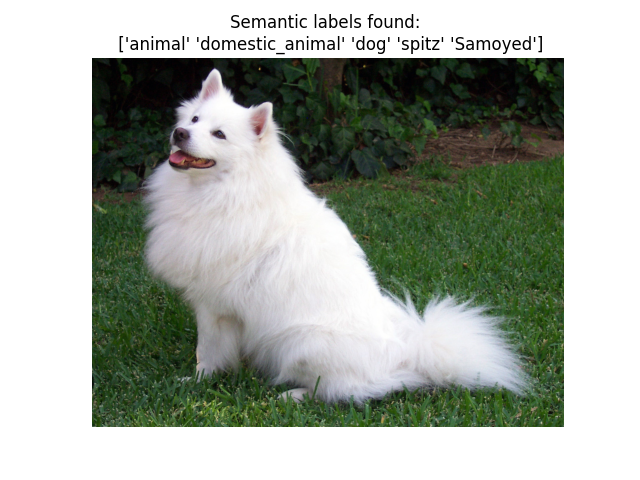Official PyTorch Implementation
Tal Ridnik, Emanuel Ben-Baruch, Asaf Noy, Lihi Zelnik-Manor
DAMO Academy, Alibaba Group
Abstract
ImageNet-1K serves as the primary dataset for pretraining deep learning models for computer vision tasks. ImageNet-21K dataset, which contains more pictures and classes, is used less frequently for pretraining, mainly due to its complexity, and underestimation of its added value compared to standard ImageNet-1K pretraining. This paper aims to close this gap, and make high-quality efficient pretraining on ImageNet-21K available for everyone. Via a dedicated preprocessing stage, utilizing WordNet hierarchies, and a novel training scheme called semantic softmax, we show that different models, including small mobile-oriented models, significantly benefit from ImageNet-21K pretraining on numerous datasets and tasks. We also show that we outperform previous ImageNet-21K pretraining schemes for prominent new models like ViT. Our proposed pretraining pipeline is efficient, accessible, and leads to SoTA reproducible results, from a publicly available dataset.
Checkout our new project, Multi-label Classification with Partial Annotations using Class-aware Selective Loss, where we presnet a top solution to multi-label datasets which are using partial annotation (such as Open Images and LVIS). Our soluion off-course uses large-scale TResNet pretraining.
We are very happy to announce that "ImageNet-21K Pretraining for the Masses" article was accepted to NeurIPS 2021 (Datasets and Benchmarks Track). OpenReview is available here.
First you can play and do inference on dedicated images using the following script. An example result:
| Backbone | ImageNet-21K-P semantic top-1 Accuracy [%] |
ImageNet-1K top-1 Accuracy [%] |
Maximal batch size |
Maximal training speed (img/sec) |
Maximal inference speed (img/sec) |
|---|---|---|---|---|---|
| MobilenetV3_large_100 | 73.1 | 78.0 | 488 | 1210 | 5980 |
| OFA_flops_595m_s | 75.0 | 81.0 | 288 | 500 | 3240 |
| ResNet50 | 75.6 | 82.0 | 320 | 720 | 2760 |
| TResNet-M | 76.4 | 83.1 | 520 | 670 | 2970 |
| TResNet-L (V2) | 76.7 | 83.9 | 240 | 300 | 1460 |
| ViT-B-16 | 77.6 | 84.4 | 160 | 340 | 1140 |
See here for more details.
We highly recommend to start working with ImageNet-21K by testing these weights against standard ImageNet-1K pretraining, and comparing results on your relevant downstream tasks.
After you will see a significant improvement, proceed to pretraining new models.
Note that some of our models, with 21K and 1K pretraining, are also avaialbe via the excellent timm package:
21K:
model = timm.create_model('mobilenetv3_large_100_miil_in21k', pretrained=True)
model = timm.create_model('tresnet_m_miil_in21k', pretrained=True)
model = timm.create_model('vit_base_patch16_224_miil_in21k', pretrained=True)
model = timm.create_model('mixer_b16_224_miil_in21k', pretrained=True)
1K:
model = timm.create_model('mobilenetv3_large_100_miil', pretrained=True)
model = timm.create_model('tresnet_m', pretrained=True)
model = timm.create_model('vit_base_patch16_224_miil', pretrained=True)
model = timm.create_model('mixer_b16_224_miil', pretrained=True)
Using this link you can make sure we indeed reach the reported accuracies in the article.
See instructions for obtaining and processing the dataset in here.
To use the training code, first download the relevant ImageNet-21K-P semantic tree file to your local ./resources/ folder:
- fall11 semantic tree
- winter21 semantic tree
Example of semantic softmax training:
python train_semantic_softmax.py \
--batch_size=4 \
--data_path=/mnt/datasets/21k \
--model_name=mobilenetv3_large_100 \
--model_path=/mnt/models/mobilenetv3_large_100.pth \
--epochs=80
For shortening the training, we initialize the weights from standard ImageNet-1K. Recommended to use ImageNet-1K weights from timm repo.
See here for reproduction code, that show how miil pretraining not only improves transfer learning results, but also makes MLP models more stable and robust for hyper-parameters selection.
The results in the article are comparative results, with fixed hyper-parameters. In addition, using our pretrained models, and a dedicated training scheme with adjusted hyper-parameters per dataset (resolution, optimizer, learning rate), we were able to achieve SoTA results on several computer vision dataset - MS-COCO, Pascal-VOC, Stanford Cars and CIFAR-100.
We will share our models' checkpoints to validate our scores.
@misc{ridnik2021imagenet21k,
title={ImageNet-21K Pretraining for the Masses},
author={Tal Ridnik and Emanuel Ben-Baruch and Asaf Noy and Lihi Zelnik-Manor},
year={2021},
eprint={2104.10972},
archivePrefix={arXiv},
primaryClass={cs.CV}
}





